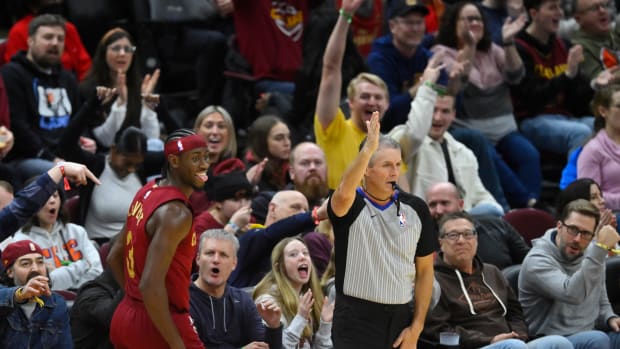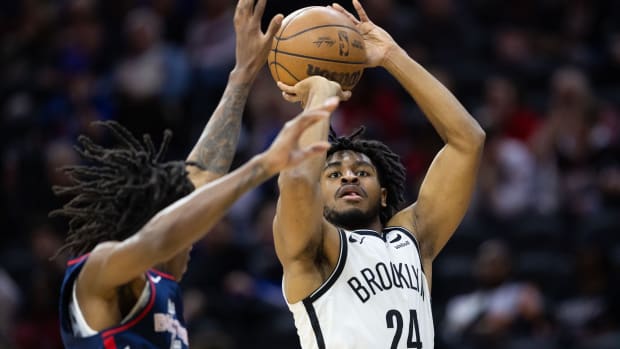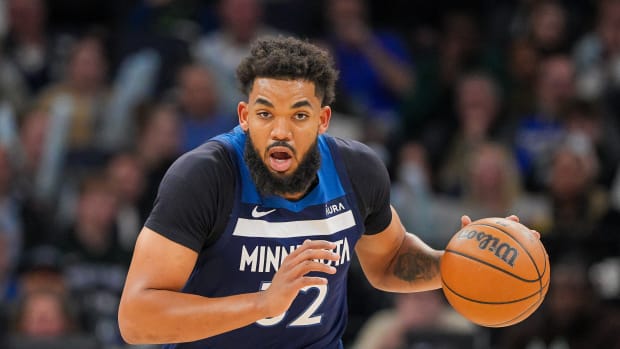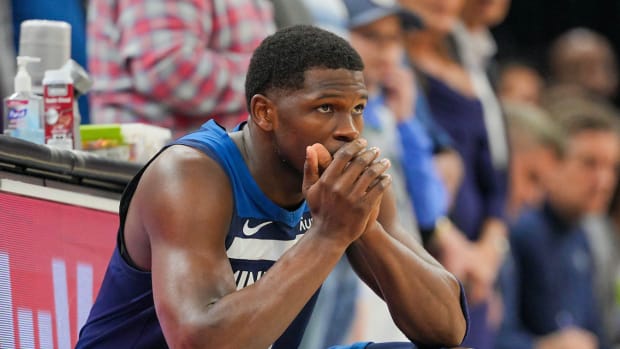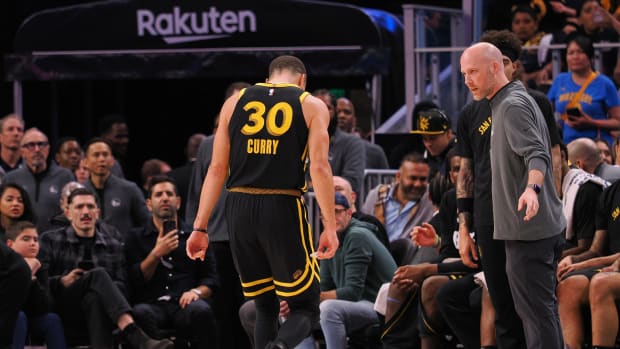Myles Turner's emergence could solve Pacers' ongoing small-ball dilemma
In their exit interviews some 10 months ago, Pacers officials made it known that this would be the season of Indiana’s transformation. The remarks of team president Larry Bird and head coach Frank Vogel are now infamous; those champions of bully ball both noted their desire to shift to a faster playing style in the coming year with Paul George logging time at power forward—a declaration that George himself never fully accepted.
The months have since seen the Pacers waver in George’s reluctance. Smaller lineups (with the 6’6” C.J. Miles essentially manning the four spot) began as the standard while George made his preferences known. Vogel, too, showed some leaning in his matchup-based reversion to bigger lineups. Even as Indiana claimed a top-three seed, it conveyed a certain rotational unrest. The new year brought about its resolution: Rookie forward Myles Turner made his full return from injury last month, empowering the Pacers to find themselves in the balance between big and small.
Rodney Hood outshining peers as he models game off another crafty lefty
Turner himself is enormous—noticeably lean in the way that 19-year-old rookies tend to be, but towering at 6’11” with a 9’4” standing reach. That size alone will give punch to Indiana’s interior defense. Offensively, Turner is at his most comfortable floating in space as a pick-and-pop threat. The majority of his shot attempts have come outside of 10 feet, of which Turner is making a cool 46.8%. Stretch comes on a gradient. While three-point shooters like Miles might have a different kind of tug on a defense’s positioning, a big man at midrange can mimic that same quality to a lesser degree. The kind of shooting that once made David West a useful component of Indiana’s offense has been transmuted into a rim-protecting, floor-running athlete.
The value of a player like that should be self-evident, and yet 10 teams talked themselves out of selecting Turner on draft night. It was then that Indiana’s plans changed, even if they hadn’t fully acknowledged it yet. Stan Van Gundy once noted that the innovative four-out offense he built around Dwight Howard in Orlando was a happy accident brought on by an a preseason injury to Bo Outlaw, his traditional power forward. Rashard Lewis took the position in Outlaw’s place and the Magic were redefined by the outgrowth. Turner’s full-time move into the starting lineup could, in time, bear that kind of pivotal significance.
• MORE NBA: Suns mercifully axe head coach Jeff Hornacek
Indiana’s lean toward small ball was a reasonable conclusion in light of the way its previous core expired. West, cagey and useful though he may be, looked uncomfortable chasing around quicker forwards. By the end of his Pacers tenure, Roy Hibbert played with the misery of a man the league had left behind. Change was needed—if not to make the Pacers smaller, per se, then certainly to make their style and roster more adaptable. Turner fits the bill perfectly. It is not a coincidence that the rookie acclimated himself well to challenging, uptempo games against the Warriors (31 points on 17 shots, eight rebounds, three blocks) and Cavs (14 points on 16 shots, 10 rebounds, four blocks) over the past few weeks. Any player of Turner’s size capable of knocking down jumpers and walling off the rim works as a skeleton key.
No playing style can take Turner out of a game, though at this stage his lack of experience still does. Turner mishandled two separate crunch-time possessions on Monday night where he was confused about where and when to set a ball screen. There are still far too many possessions where an opponent gets all the way to the rim after Turner’s moment of recognition in help comes a precious second too late—some, perhaps, the product of exhaustion as his minutes scale up. When Turner makes that rotation, as LeBron James will tell you, he’s terrific:
Yet part of the reason younger bigs struggle against the defensive learning curve is because of all the detail that goes into coverage. Turner already has the tools to contribute, even to a team that boasts the second-best defense in the league after adjusting for schedule. He’s just fudging his way through the nuance at the moment with odd recovery angles and inefficient footwork. There are markers all throughout Turner’s game of the fact that he’s 19 years old. Juxtaposed with his impressive production and spectacular sequences, those reminders are frightening. Every team in the league would be so lucky as to have a teenager this adept in its lineup. Instead, every team but the Pacers will be forced to wrestle with all of the problems that Turner creates.
The aptitude is off the charts. Turner doesn’t consistently have that sense of how to be in the right place at the right time, though to watch him square up and shuffle on a possession like this one assures that mobility is not the problem:
And for as thrilling as it is to see Turner pin James’ dunk against the backboard, his most impressive blocks on Monday night were a touch less dramatic. James challenged Turner on subsequent occasions inside, twice attempting to bait the rookie into the air with a pump fake. Turner stayed vertical but didn't overcommit, altering both of LeBron’s shot attempts with discipline far beyond his years:
If Turner can get to the point where he’s moving, sizing up, and contesting like that on a consistent basis, he’ll rank as one of the better defensive bigs in the league. That this is so obvious this early in his NBA career is what makes Turner’s emergence for Indiana so important. The contemporary Pacers move forward with a new starter cast in the image of the modern big man – all range shooting and rangy defense. They’re playing faster if not necessarily smaller, more dynamically even as they’re learning new lineups. Indiana’s transformation has come at last, its evolutionary purpose renewed not in form but in function.































